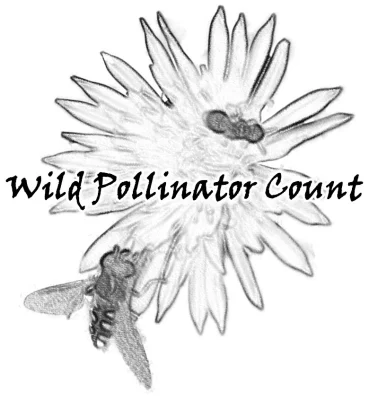 The next round of the Wild Pollinator Count is nearly here. Help us to build a picture of the pollinator insects that are active in your area at this time of year by doing your own count between Sunday April 10th and Sunday April 17th.
The next round of the Wild Pollinator Count is nearly here. Help us to build a picture of the pollinator insects that are active in your area at this time of year by doing your own count between Sunday April 10th and Sunday April 17th.
While you don’t need any fancy equipment or special skills to participate in the Wild Pollinator Count, you might like to plan ahead so you’re all set to go.
All it takes is to spend 10 minutes watching a flowering plant of your choice, take note of the potential insect pollinators you see and let us know by reporting your results on our website. We’ve got resources to help you, including how to count instructions, a printable tally sheet, pollinator insect identification tips, guide to common pollinator insects, frequently asked questions and more.
With the seasonal differences compared to November (our other count period), you can expect to find different flowers in bloom and perhaps different species or numbers of pollinator insects.
Where will you count?
The project is designed to allow participants to count as close to home as possible. So your garden or a flowering plant in the neighbourhood are great places to start. If you have a favourite bushland or park, you might like to count there. Across Australia the range of plants flowering in the count week will vary, so pick a spot where you can find flowers to watch. If a plant you watched in November is flowering, you might like to count again on it to see if the pollinator insects visiting are similar or different.
Remember, we’re keen to know which plant you observed for the count, and whether it’s a native or exotic. If you aren’t sure of the plant name, you might try to find out or you could share a photo with your count. If you would like to observe a number of plants, please try to do each plant as a separate count. This way, we see which plants and pollinators are associated, rather than a more general picture of the pollinators across a garden or landscape.
When will you count?

Many pollinator insects are only active when it’s warm (over 15° C), so we recommend trying to count on a sunny day. If the weather is cooler or overcast for your count, you might see mainly flies, European honey bees or European wasps. They tend to be more cold-tolerant than native bees, wasps or other flying insects. If the forecast isn’t great in your area on days you have time to spare, you might like to try to do a count in a lunch or tea break to take advantage of better conditions. If you’d like you can also note the weather in your observation notes (but you don’t have to).
Tell your friends and keep in touch
Don’t forget you can keep up with all the news from the count by subscribing to our email news, following our website or via the #OzPollinators hashtag on social media (we tweet but the hashtag works for public posts on facebook and instagram too!). During the count you can upload photos to our flickr group or post to our project on Bowerbird.org.au.
Join the fun by adding your comments or photos during the count, or even as you plan for the week … the more the merrier!
